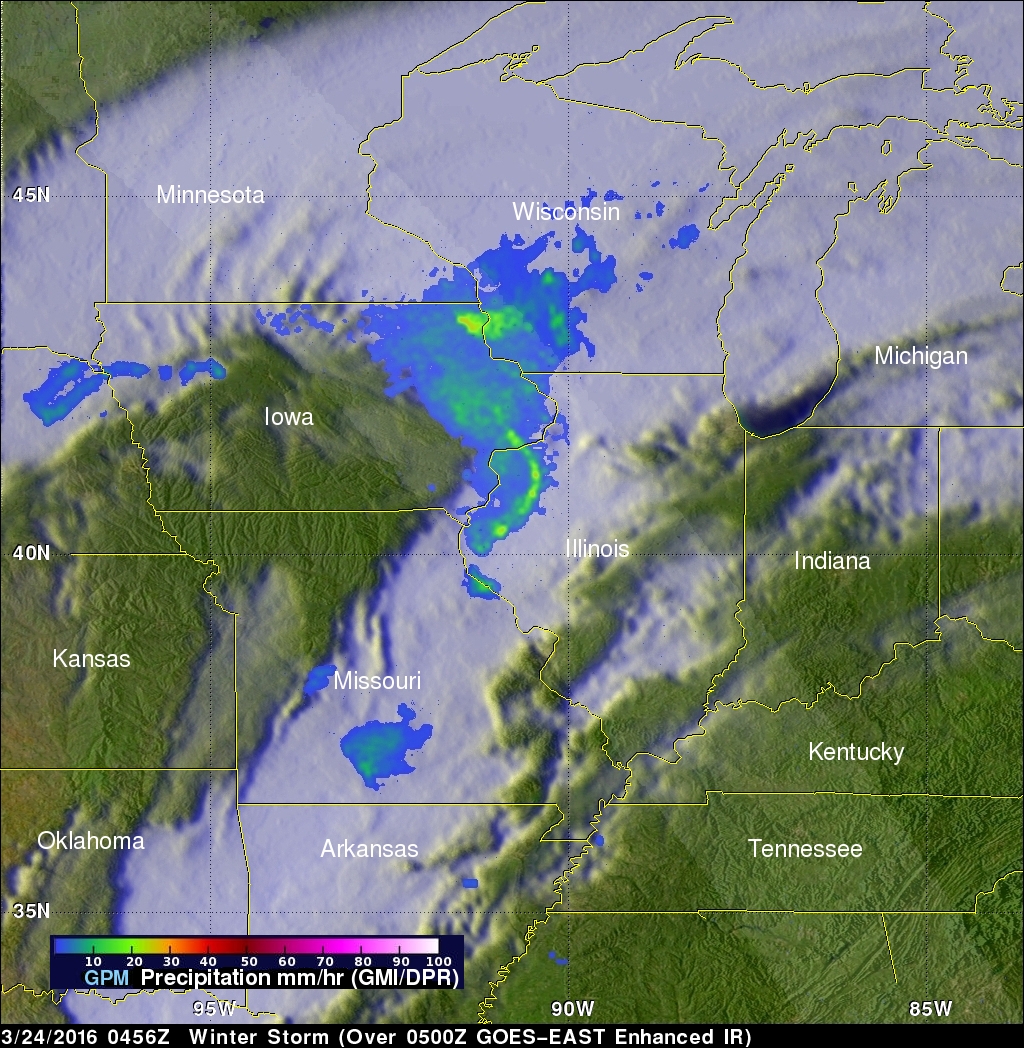Early Spring Storm Brings Snow to Parts of Colorado, Midwest
A strong, upper-level trough that dropped down into the Central Rockies in the middle of last week produced an early spring storm (also referred to as Winter Storm Selene) that dumped heavy snow on the order of a foot or more in a short period of time along the Front Range of Colorado from near Colorado Springs northward through Denver and up into southeastern Wyoming. Around 2 feet of snow were reported in places like Aurora and Boulder with some of the highest totals reaching 31 inches. Farther to the north, Cheyenne, Wyoming picked up over 14 inches of snow from the storm. The blizzard stranded hundreds of motorists along major interstates with winds gusting up to 50 mph; the storm caused Denver International Airport to close for several hours. The heavy wet snow also led to widespread power outages in the region. After hitting Colorado, the storm tracked eastward into the Upper Midwest where it then dumped up to 2 feet of snow across portions of central Wisconsin.
The Integrated Multi-satellitE Retrievals for GPM or IMERG is used to make estimates of precipitation from a combination of passive microwave sensors, including the GMI microwave sensor on board the GPM satellite, and geostationary IR (infrared) data. This image shows IMERG precipitation estimates for the period 20-25 March 2016 for most of the central US from west of the Rockies to the East Coast. IMERG shows liquid equivalent precipitation amounts on the order of 2 inches (shown in yellow) over northeast central Colorado. Snow ratios can vary greatly, but a good general estimate is roughly 10 inches of snow per inch of liquid. This would suggest approximately 20+ inches of snow in the areas shown in yellow over Colorado. IMERG shows that the storm dropped lesser amounts over South Dakota, Nebraska and most of Iowa before ramping up again over eastern Iowa, southern Minnesota and central Wisconsin where again on the order of 20+ inches of snow are shown (yellow areas). Areas farther south and east on the warm side of the storm indicate rain. IMERG shows areas of heavy rainfall of at least 2 (shown in yellow) to 5 inches (darker red) over southeast Texas, southeastern Oklahoma, northwest Arkansas, north-central Mississippi, central Indiana, northwest Ohio, and from the panhandle of Florida across southeast Alabama up into central Georgia. These higher amounts are mainly associated with thunderstorm activity. As the main area of low pressure associated with the storm tracked eastward out of the Central Plains and up into the Great Lakes Region, an advancing cold front, which extended all the way down into the Gulf of Mexico drew warm moist, unstable air northward and provided the trigger for widespread thunderstorms. These storms produced a few isolated tornadoes as well as widespread wind and hail reports.
GPM captured this image of the storm at 4:56 UTC 24 March 2016 (11:56 pm Wednesday CDT 23 March 2016) as the surface low was moving across northern Missouri, and moderate to heavy snow was occurring over eastern Iowa and southeastern Wisconsin and a convective band of more intense rain was advancing into western Illinois (bright green arc). The image shows precipitation rates derived from the GPM GMI (outer swath) and DPR (inner swath) overlaid on IR data from the GOES-EAST satellite.
Data for this last image was collected at the same time as the previous image and shows a 3D rendering of the storm from the DPR. The image reveals somewhat higher radar echo tops over northwestern Illinois in association with the convective band seen in the previous image. The highest tops are on the order of 10 km (light bluegreen). Farther north, where the heaviest snow is falling, echo tops are fairly low (~5 km or less, shown in blue). Synoptic snow events are driven by larger-scale temperature gradients, usually the boundary between opposing air masses, wherein even stable air can be forced to rise over colder air. Thus, snow storms are often quite shallow whereas thunderstorms, which are mainly driven by unstable air (i.e., relatively warm air below colder air), tend to grow vertically and have higher echo tops.




